The Coffee Climate Connection: How Environment Impacts Your Favorite Coffee Flavor
Discover the Coffee Climate Connection: From altitude to rainfall and soil to sunshine, learn how the natural environment defines the flavor profile of your favorite coffee.
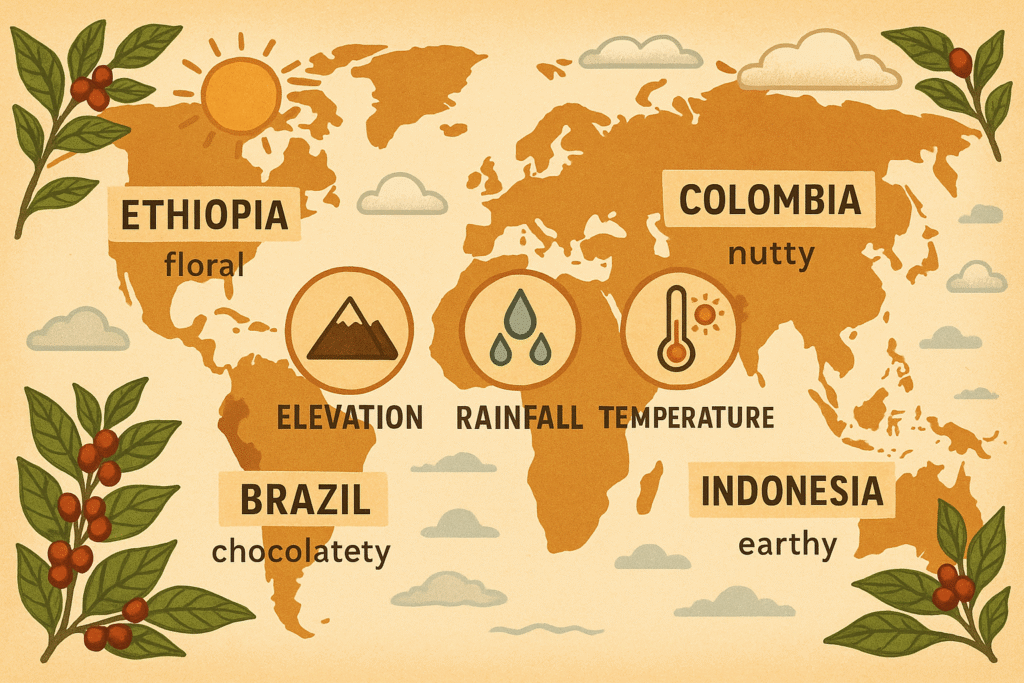
Your morning brew has more in common with its birthplace than you might think. The taste, aroma, and character of your favorite coffee depend heavily on where—and how—it was grown. This link between environment and flavor is known as the Coffee Climate Connection.
Understanding the Coffee Climate Connection helps you not only appreciate your drink more but also choose better, support more sustainable sourcing, and even anticipate how climate change might impact your future coffee choices.
Let’s take a flavorful journey around the world and decode how the environment crafts every cup we sip.
What Is the Coffee Climate Connection?
The Coffee Climate Connection is the relationship between environmental factors—such as geography, altitude, soil, and weather—and the resulting flavor profile of coffee beans.
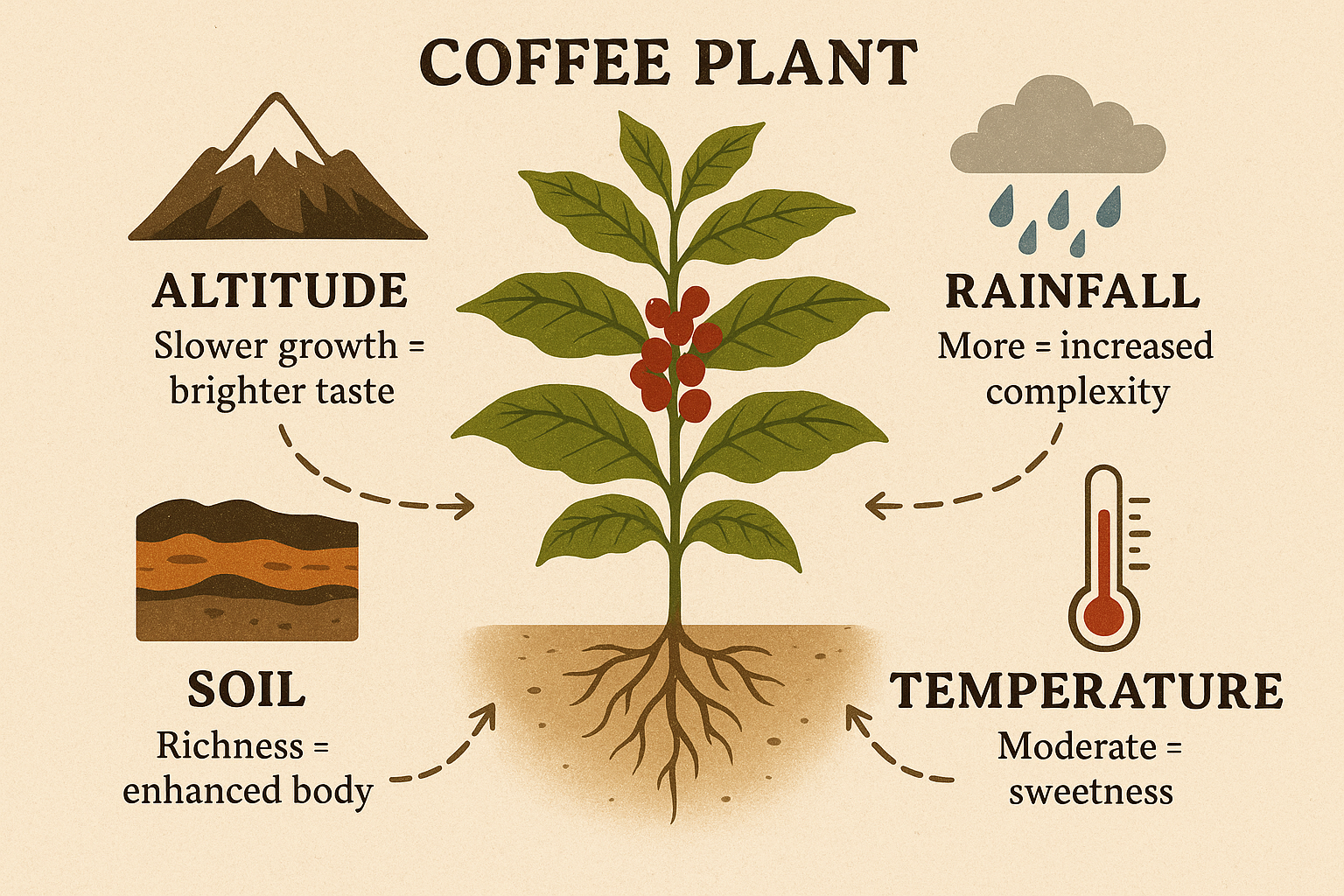
Like wine, coffee has a terroir—a term that encapsulates the unique taste created by the location where it’s grown. The interplay of altitude, rainfall, sunlight, and soil chemistry directly influences how coffee cherries grow and mature, ultimately shaping everything from acidity and sweetness to body and aftertaste.
Geography + Climate = Flavor
Here’s how each element of the Coffee Climate Connection contributes to the magic in your mug:
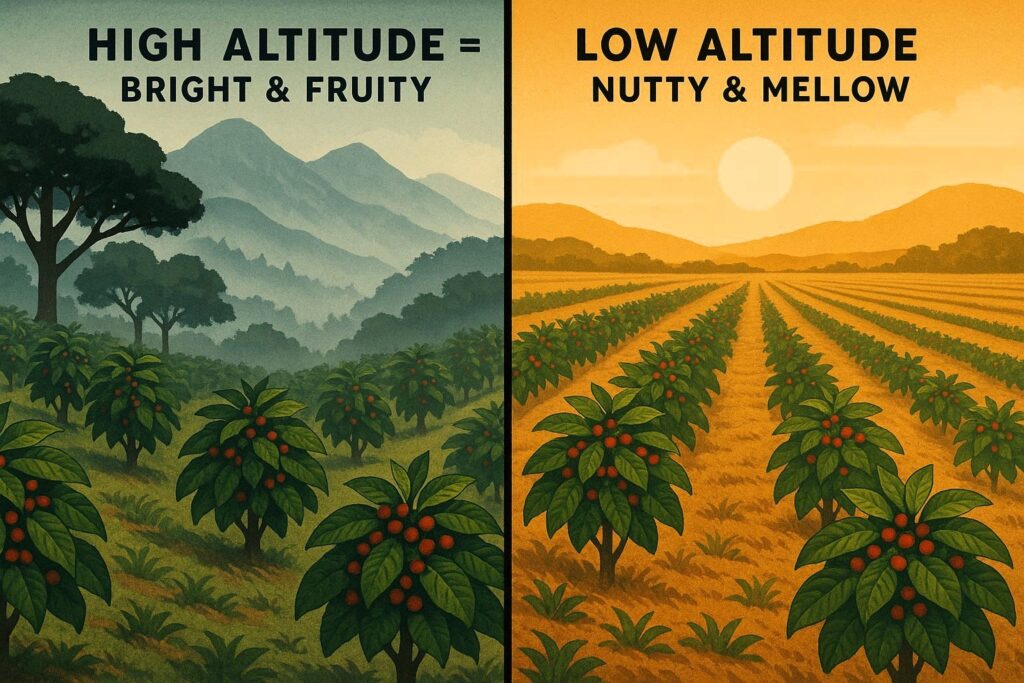
1. Altitude:
Coffee grown at higher elevations tends to ripen more slowly, creating denser beans. These beans usually carry more vibrant acidity, floral aromas, and complex flavors—often found in Ethiopian or Kenyan coffees.
2. Soil Composition:
Volcanic soils, common in places like Guatemala or Indonesia, are rich in nutrients and drainage. They contribute to the deep, earthy tones and bright finish you taste in some beans.
3. Rainfall & Sunlight:
Consistent rainfall helps coffee cherries grow evenly, while too much or too little can impact flavor. The balance of sun and shade also influences bean density and sugar development.
4. Temperature Range:
Ideal growing temperatures hover between 60°F and 70°F (15°C to 24°C). Too much heat or cold throws off the maturation timeline, making the beans less flavorful or unbalanced.
Together, these create the Coffee Climate Connection—the blueprint behind your brew’s identity.
Global Examples of the Coffee Climate Connection
Here’s how the Coffee Climate Connection plays out in different parts of the world:
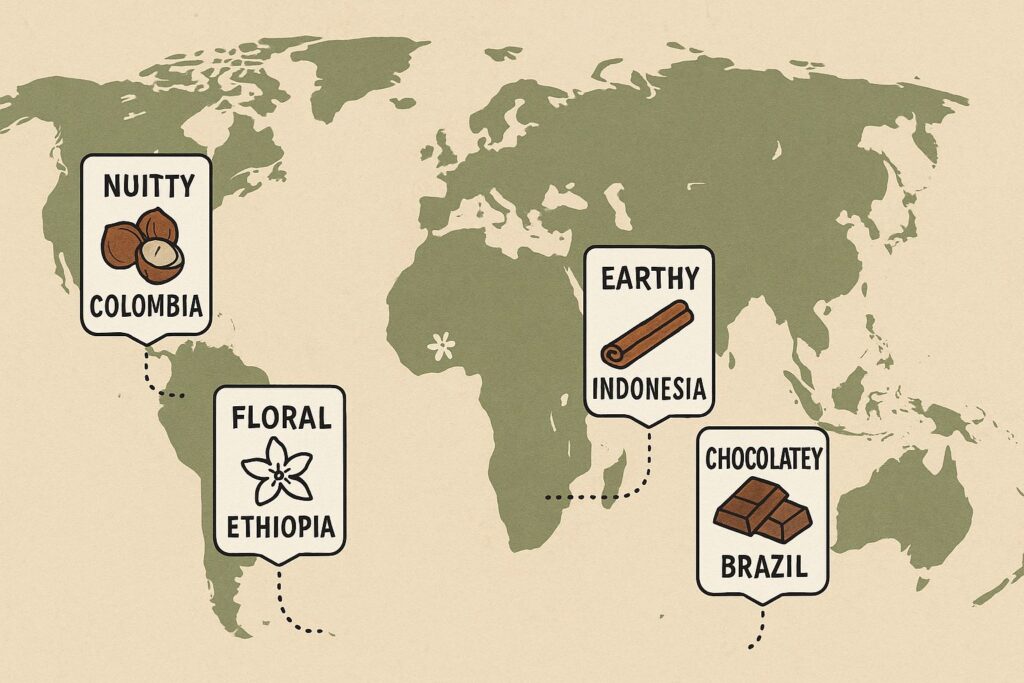
Ethiopia – The Floral Classic
-
Climate: High altitude, wild forested terrain, moderate rainfall
-
Flavor: Bright acidity, floral and citrus notes
-
Connection: Grown in diverse microclimates that support heirloom varietals, Ethiopia’s coffee is renowned for complexity and aroma.
Colombia – The Balanced Beauty
-
Climate: High mountain slopes, frequent rainfall, distinct seasons
-
Flavor: Medium body, mild acidity, nutty or fruity tones
-
Connection: The Andes offer varied elevations and stable weather, perfect for rich, dependable flavor.
Indonesia – Earthy and Bold
-
Climate: Low elevation, tropical humidity, volcanic soils
-
Flavor: Low acidity, heavy body, spicy and earthy notes
-
Connection: Unique wet-hulling processing combined with humid climate results in bold, complex profiles.
Brazil – Consistent and Smooth
-
Climate: Lower altitude, warm, stable weather
-
Flavor: Chocolatey, nutty, sweet and mild
-
Connection: Massive production and even climate make Brazilian coffee a smooth staple for blends and espresso.
Climate Change and the Coffee Climate Connection
The balance that creates ideal coffee-growing conditions is fragile. As the global climate changes, so does the Coffee Climate Connection:
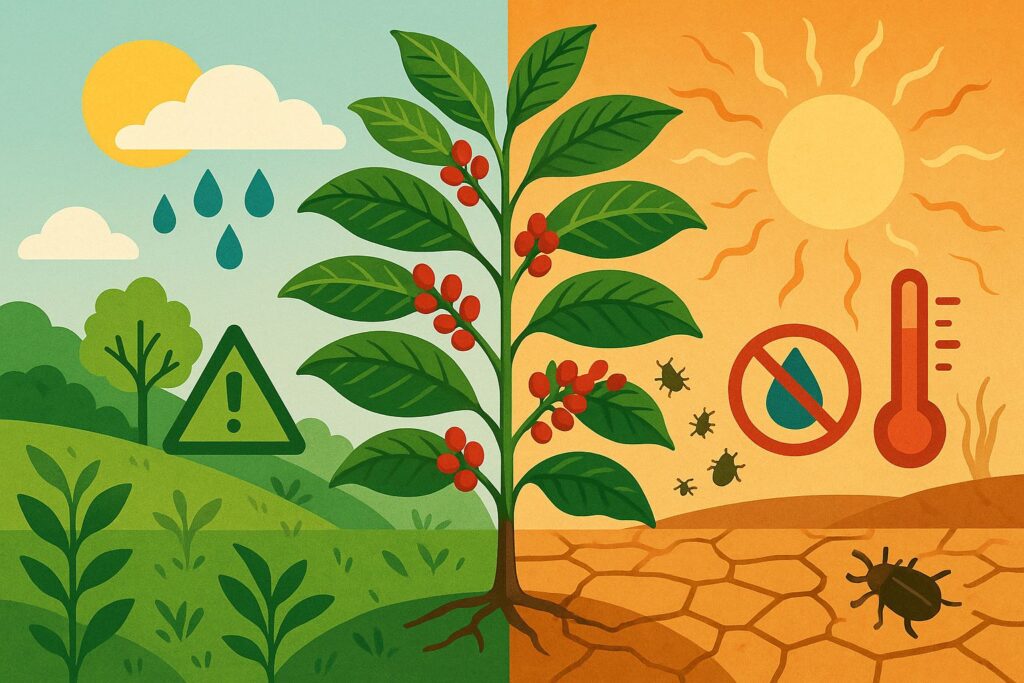
-
Rising temperatures stress coffee plants, causing inconsistent bean development.
-
Erratic rainfall disrupts flowering, harvesting, and even fermentation processes.
-
Pests and diseases like coffee rust are expanding into new territories due to warming conditions.
This shifting coffee climate affects not just the quality but also the availability of your favorite beans. Some regions may no longer be viable for coffee in the next few decades.
How You Can Support the Coffee Climate Connection
Protecting the Coffee Climate Connection starts with conscious choices:

-
Choose climate-conscious roasters who partner with sustainable farms
-
Buy shade-grown, organic, or certified climate-resilient beans
-
Support regenerative agriculture and smallholder cooperatives
Every cup matters when it comes to preserving the balance between nature and flavor.
Final Sip: The Future of Flavor Lies in Climate
The next time you enjoy your coffee—whether bold and nutty or floral and crisp—take a moment to think about where it came from. The hills, the rain, the sun, and the soil—it all brewed into that single cup.
The Coffee Climate Connection is more than a farming term. It’s a lifestyle insight, a global reminder that our small routines are deeply rooted in the natural world.
Taste with gratitude. Sip with awareness. Because when we honor the climate, we protect the coffee we love.
